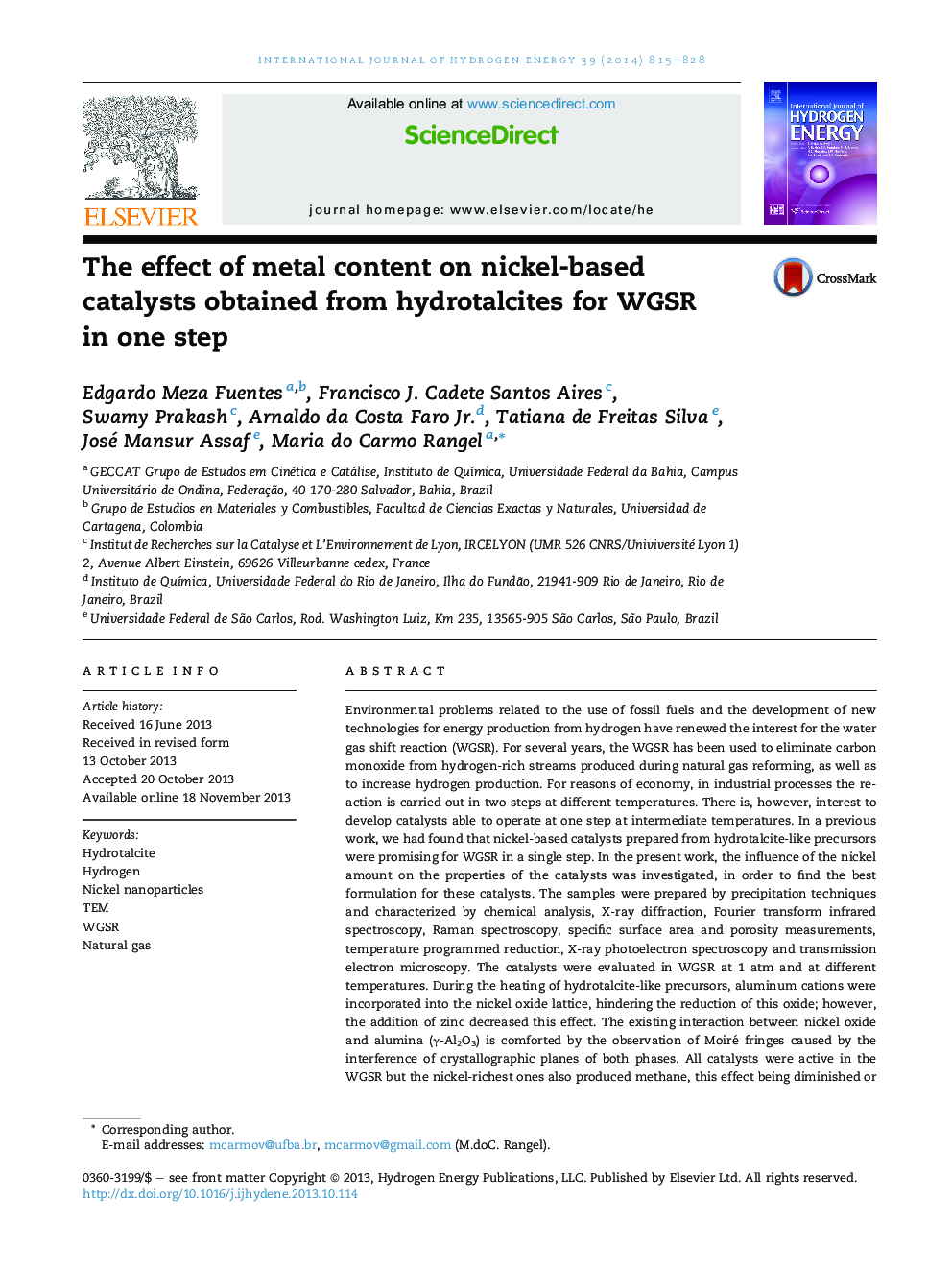| Article ID | Journal | Published Year | Pages | File Type |
|---|---|---|---|---|
| 1276526 | International Journal of Hydrogen Energy | 2014 | 14 Pages |
•The metal content affects the cell parameters of Ni, Al, Zn-hydrotalcites.•The existing interaction between NiO and alumina is comforted by the Moiré fringes.•Ni on Zn, Al oxides are active in WGSR and Zn inhibits methanation.
Environmental problems related to the use of fossil fuels and the development of new technologies for energy production from hydrogen have renewed the interest for the water gas shift reaction (WGSR). For several years, the WGSR has been used to eliminate carbon monoxide from hydrogen-rich streams produced during natural gas reforming, as well as to increase hydrogen production. For reasons of economy, in industrial processes the reaction is carried out in two steps at different temperatures. There is, however, interest to develop catalysts able to operate at one step at intermediate temperatures. In a previous work, we had found that nickel-based catalysts prepared from hydrotalcite-like precursors were promising for WGSR in a single step. In the present work, the influence of the nickel amount on the properties of the catalysts was investigated, in order to find the best formulation for these catalysts. The samples were prepared by precipitation techniques and characterized by chemical analysis, X-ray diffraction, Fourier transform infrared spectroscopy, Raman spectroscopy, specific surface area and porosity measurements, temperature programmed reduction, X-ray photoelectron spectroscopy and transmission electron microscopy. The catalysts were evaluated in WGSR at 1 atm and at different temperatures. During the heating of hydrotalcite-like precursors, aluminum cations were incorporated into the nickel oxide lattice, hindering the reduction of this oxide; however, the addition of zinc decreased this effect. The existing interaction between nickel oxide and alumina (γ-Al2O3) is comforted by the observation of Moiré fringes caused by the interference of crystallographic planes of both phases. All catalysts were active in the WGSR but the nickel-richest ones also produced methane, this effect being diminished or prevented by the addition of zinc to the catalysts. No simple relationship was found between nickel amount and the activity or selectivity of the catalysts probably due to the different interactions among the metals at different reaction temperatures. The most efficient catalyst was obtained by heating the N0.37Z0.37A0.25 hydrotalcite, which produces a solid able to work in WGSR in one step at an intermediate temperature (300 °C) leading to 100% of carbon monoxide conversion without producing methane.
Graphical abstractFigure optionsDownload full-size imageDownload as PowerPoint slide
